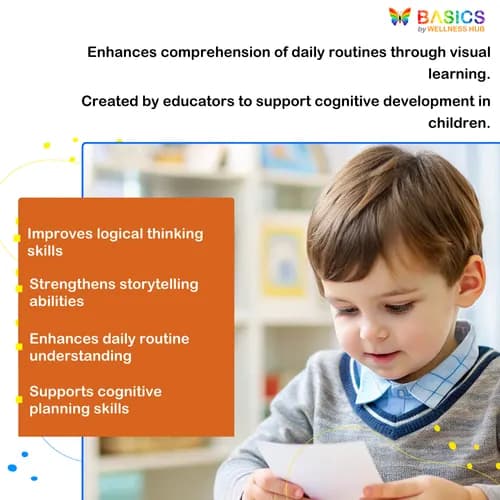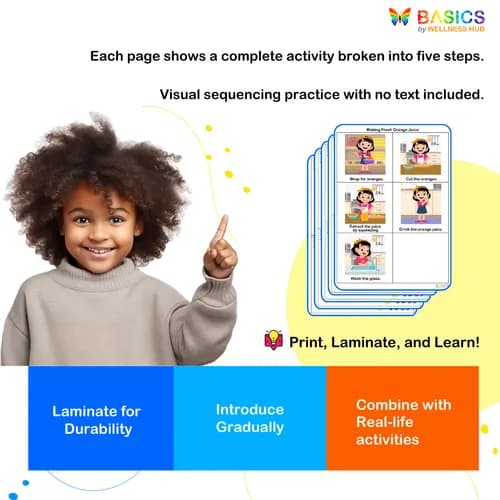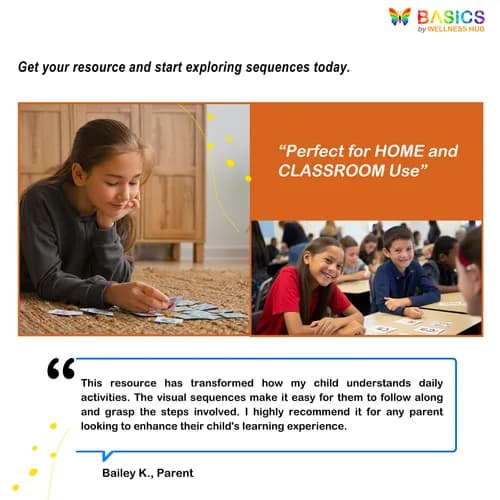




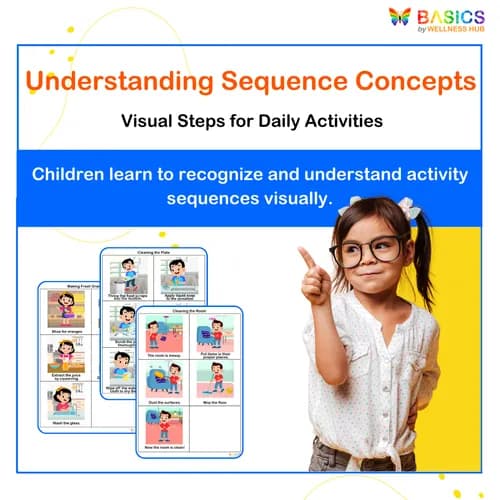
Sequencing Concepts: Visual Worksheets for Daily Activities
₹80
₹160
50% off
0 (0 ratings)
Grade Levels
Pre-K - Grade 2 (Ages 3-7)
Content Overview
Format: Printable PDF | Pages: 20 | Features: 100 illustrated images showing 5-step sequences of daily activities.
Categories
Pages from the Resource
Enhance children's understanding of daily routines with our Sequencing Concepts worksheets. This 20-page PDF features 100 illustrated images that depict familiar activities in 5-step sequences, helping kids learn the logical order of actions. Ideal for improving cognitive planning, comprehension, and expressive language skills.

Page 1
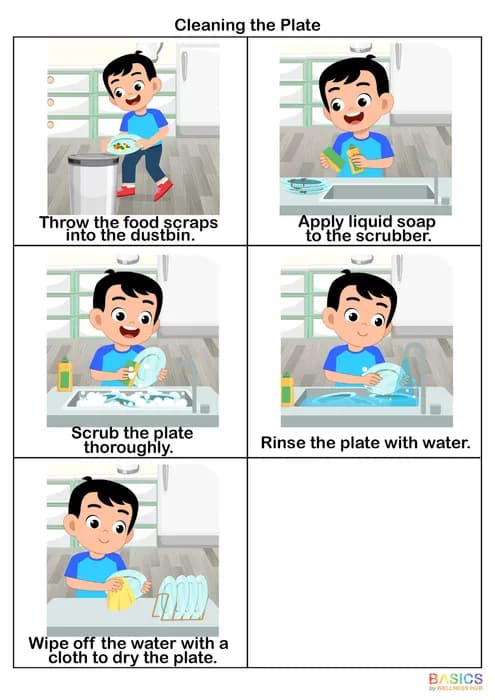
Page 2
What Users Say
0
0 ratings
5
0+
4
0+
3
0+
2
0+
1
0+
5 Stars
Product is Good to use.
1 year ago
Varsha Parent
Similar Products

2-Step Sequencing Cards: Free Printable PDF for Daily Activities
FREE
₹160
50% off
4.9 (48 ratings)
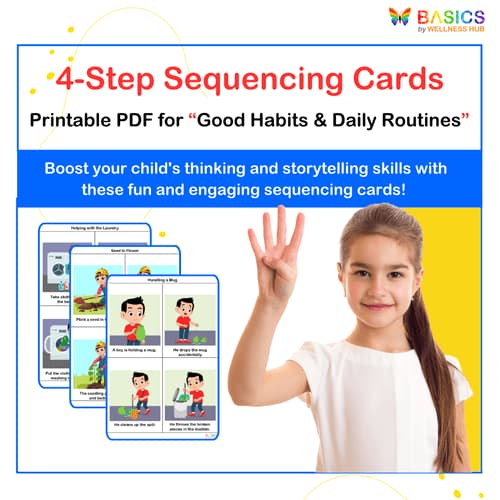
4-Step Sequencing Cards: Printable PDF for Good Habits & Daily Routines
₹ 80.00
₹ 160.00
50% off
4.9 (52 ratings)

3-Step Sequencing Cards: Printable PDF for Early Learning
₹ 80.00
₹ 160.00
50% off
4.9 (56 ratings)
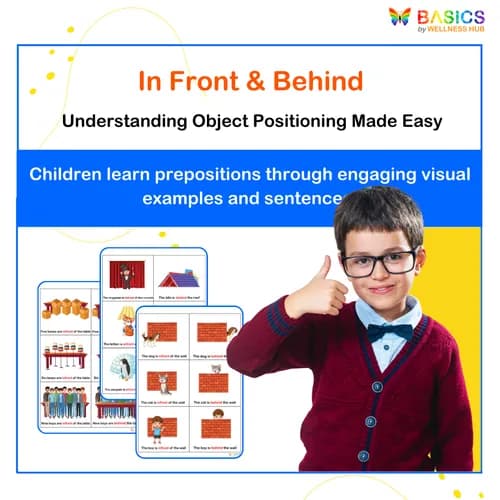
In Front & Behind – Learn Object Position with Visual Examples
₹ 80.00
₹ 160.00
50% off
4.8 (48 ratings)
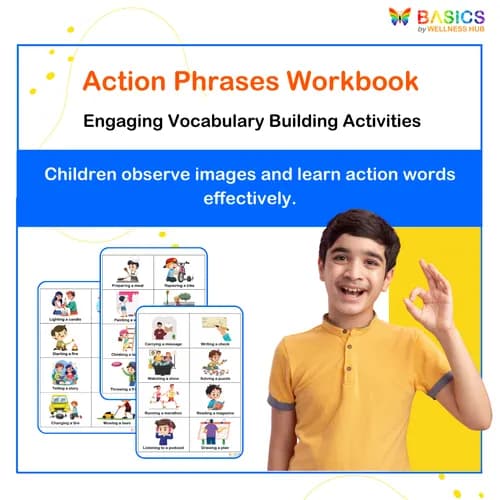
Action Phrases Worksheet: Build Vocabulary with Illustrated Actions
₹ 80.00
₹ 160.00
50% off
4.8 (48 ratings)
About the Product
Introduction
Understanding the order of events is a crucial skill for young learners, helping them make sense of the world around them. The Sequencing Concepts worksheet set is designed to support children in grasping the logical flow of everyday activities through visual representation. With 20 pages of engaging illustrations, each showcasing a 5-step sequence of familiar tasks, this resource is perfect for children aged 4-8. Activities such as getting ready for school, making a sandwich, and cleaning the room are depicted in a clear, chronological order, allowing children to visualize the beginning, middle, and end of each process.
This resource is ideal for parents, teachers, and therapists looking to enhance children's comprehension, cognitive planning, and expressive language skills. By observing and discussing these sequences, children can improve their understanding of daily routines while developing critical thinking and storytelling abilities. Whether used in the classroom, during therapy sessions, or at home, these worksheets provide a fun and interactive way for children to learn about sequencing.
Product Details
- Format: Printable PDF
- Total Pages: 20
- Images per Page: 5
- Total Illustrated Images: 100
- Content: Each page features one complete activity broken into 5 sequential steps, illustrated with child-friendly visuals.
- Activities Included: Examples such as getting ready for school, vacuuming the floor, planting a seed, making a sandwich, washing hands, and cleaning the room.
- Learning Outcomes: Builds understanding of sequential order, improves cognitive planning and prediction skills, strengthens comprehension of daily routines, enhances storytelling and expressive language, and develops visual processing and logical thinking.
Educational Benefits
1. Enhances Sequential Understanding
- Children learn to recognize the logical order of events through visual representation.
- This understanding helps them predict what comes next in various activities.
2. Improves Cognitive Planning Skills
- By observing the steps in each sequence, children develop the ability to plan and execute tasks.
- They learn to anticipate outcomes based on the order of actions.
3. Strengthens Comprehension of Daily Routines
- Familiar activities depicted in the sequences help children relate to their own experiences.
- This connection reinforces their understanding of everyday tasks and responsibilities.
4. Boosts Expressive Language Skills
- Discussing the sequences encourages children to articulate their thoughts and observations.
- They practice using descriptive language as they explain the steps involved in each activity.
5. Develops Visual Processing and Logical Thinking
- Children enhance their ability to process visual information and make logical connections.
- This skill is crucial for problem-solving and critical thinking in various contexts.
Instructions for Use
Step 1: Print the Worksheets
- Download the PDF and print each page on standard A4 or Letter-sized paper.
- Consider laminating the pages for durability and repeated use.
Step 2: Introduce the Activity
- Choose a page and explain the activity depicted in the sequence.
- Ask the child to observe the images and describe what they see before discussing the steps.
Step 3: Sequence the Steps
- Encourage the child to identify the beginning, middle, and end of the activity.
- Ask guiding questions like, "What happens first?" and "What do you think comes next?"
Step 4: Discuss Each Step
- Go through each of the five images together, discussing the actions taking place.
- Encourage the child to use complete sentences to describe each part of the sequence.
Step 5: Role-Play the Activity
- After discussing the sequence, let the child act out the activity.
- This hands-on approach reinforces their understanding and makes learning fun.
Step 6: Repeat with Different Activities
- Use various pages to expose the child to different routines and tasks.
- Revisit previously completed sequences to reinforce learning and retention.
Step 7: Encourage Storytelling
- Ask the child to create a story based on the sequence they just completed.
- This activity enhances their narrative skills and encourages creative thinking.
Activities Using the Resource
1. Sequence Sorting
Objective: Help children identify the correct order of activities.
How to Play:
- Print out a page with a 5-step sequence.
- Cut out the images and mix them up.
- Ask the child to arrange the images in the correct order and explain their reasoning.
Skill Development:
- Understanding of sequential order
- Cognitive planning skills
- Verbal articulation
2. Storytelling Circle
Objective: Enhance storytelling skills through visual prompts.
How to Play:
- Choose a sequence (e.g., making a sandwich).
- Ask the child to narrate the story of the activity using the images as prompts.
- Encourage them to add details and emotions to each step.
Skill Development:
- Expressive language
- Narrative skills
- Creativity in storytelling
3. Role-Play Activity
Objective: Reinforce understanding of daily routines through action.
How to Play:
- Select a sequence (e.g., washing hands).
- Gather props and act out each step together.
- Discuss the importance of each action as you perform it.
Skill Development:
- Motor planning
- Real-life application of routines
- Social interaction
4. Predict the Next Step
Objective: Develop prediction and reasoning skills.
How to Play:
- Show the first four images of a sequence (e.g., planting a seed).
- Ask the child to predict what the last step will be.
- Reveal the final image and discuss their reasoning.
Skill Development:
- Critical thinking
- Logical reasoning
- Predictive skills
5. Visual Memory Game
Objective: Improve memory retention and visual processing.
How to Play:
- Display a sequence for a short time, then cover it.
- Ask the child to recall the steps in order.
- Gradually increase the complexity by adding more sequences.
Skill Development:
- Visual memory
- Attention to detail
- Recall ability
6. Create Your Own Sequence
Objective: Encourage creativity and understanding of sequencing.
How to Play:
- Ask the child to think of a familiar activity not covered in the worksheets (e.g., brushing a pet).
- Help them draw or find images to create their own 5-step sequence.
- Share their sequence with family or friends.
Skill Development:
- Creative thinking
- Planning and organization
- Communication skills
Frequently Asked Questions
Q1: What age group is this resource intended for?
A1: This resource is designed for children aged 4-8 years old. It is suitable for preschool and early elementary students who are developing their understanding of sequencing and daily routines. The engaging visuals and familiar activities help young learners connect with the content, making it an effective tool for enhancing their comprehension skills.
Q2: How can I use this resource in a classroom setting?
A2: The sequencing cards can be used in various ways, such as in small group activities, whole-class discussions, or individual practice. Teachers can guide students through the sequences, encouraging them to identify the beginning, middle, and end of each activity. This approach not only enhances comprehension but also supports storytelling skills, as children learn to articulate the sequence of events.
Q3: Can this resource be used for special needs students?
A3: Yes, this resource is highly adaptable and can be beneficial for special needs students. The visual nature of the sequencing cards provides clear and concrete representations of activities, which can aid in understanding and retention. Additionally, educators can modify the pace and complexity of the activities to meet individual learning goals, ensuring that all students can engage with the material effectively.
Q4: How do I access the resources after purchase?
A4: Upon completing your purchase, you will receive an email with a download link to the PDF resource. You can access it immediately, and it will be available for you to download and print as needed. If you encounter any issues, our support team is here to assist you, ensuring a smooth experience from purchase to usage.
Q5: What is your refund policy if I am not satisfied with the resource?
A5: Wellness Hub offers a satisfaction guarantee. If you are not satisfied with your purchase, you can contact our support team within 30 days of purchase for a refund or exchange. We want to ensure that you have a positive experience and find value in our resources, so we encourage you to reach out if you have any concerns.
Q6: Are there any suggestions for integrating this resource with IEP goals?
A6: Absolutely! This resource can be integrated into IEP goals focused on communication, cognitive development, and social skills. For example, educators can use the sequencing cards to target language development by encouraging students to describe each step in their own words. Additionally, it can support goals related to following directions and improving organizational skills through structured sequencing activities.
Q7: What types of licensing options do you offer for schools?
A7: Wellness Hub provides bulk licensing options for schools and educational institutions. This allows multiple educators to access the resource for classroom use, ensuring that all students benefit from the material. For specific pricing and details about bulk purchases, please contact our support team, and we will be happy to assist you.
Q8: How can I contact your support team if I have questions?
A8: You can reach our support team through the contact form on our website or by emailing us directly. We strive to respond to all inquiries promptly, typically within 24 hours. Whether you have questions about your purchase, need assistance with the resource, or have general inquiries, we are here to help.
Q9: Is there a limit to how many times I can download the resource?
A9: Once you purchase the resource, you can download it as many times as you need. We understand that technology can sometimes be unpredictable, so we want to ensure that you have continuous access to the materials. If you experience any issues with downloading, please reach out to our support team for assistance.
Q10: Are your resources accessible for children with visual impairments?
A10: While our resources are primarily visual, we are committed to making them as accessible as possible. We recommend using the sequencing cards alongside verbal explanations and tactile activities to support children with visual impairments. Additionally, we are continuously working on enhancing our resources to better serve all learners, so feedback on accessibility is always welcome.
Usage Rights and Restrictions
Allowed Usage:
- Personal use by parents, teachers, and therapists.
- Printable for classroom, home, or therapy settings.
- Can be used in group or one-on-one learning sessions.
Not Allowed:
- Reselling, redistributing, or modifying the resource for commercial use.
- Sharing publicly (e.g., on blogs, social media, or websites) without permission.
- Uploading the file to public sharing platforms.
If you need a bulk license for schools or therapy centers, please contact us.
Conclusion
The Sequencing Concepts worksheet set is a powerful resource for fostering essential skills in young learners. By breaking down everyday activities into clear, visual sequences, children can easily grasp the logical flow of events, improving their cognitive planning, comprehension of daily routines, and expressive language abilities. This resource is perfect for parents, teachers, and therapists alike, providing a structured yet engaging way to support children's learning.
Utilizing these worksheets in various settings—whether at home, in the classroom, or during therapy sessions—will enhance children's understanding of sequencing and storytelling. With the ability to visualize the beginning, middle, and end of familiar tasks, children will develop critical thinking skills that are fundamental for their overall growth and independence. Start using the Sequencing Concepts worksheets today and empower your child to navigate their world with confidence!

